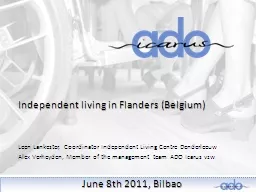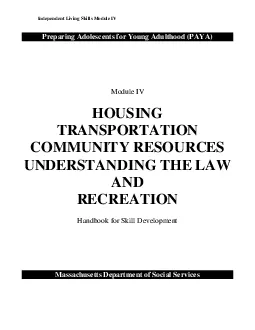PPT-From Charity to Independent Living
Author : celsa-spraggs | Published Date : 2016-07-08
Presentor Jae Hee Kim List the important events and create a timeline of the history of disabled people of America SLO Colonial America In colonial America the
Presentation Embed Code
Download Presentation
Download Presentation The PPT/PDF document "From Charity to Independent Living" is the property of its rightful owner. Permission is granted to download and print the materials on this website for personal, non-commercial use only, and to display it on your personal computer provided you do not modify the materials and that you retain all copyright notices contained in the materials. By downloading content from our website, you accept the terms of this agreement.
From Charity to Independent Living: Transcript
Download Rules Of Document
"From Charity to Independent Living"The content belongs to its owner. You may download and print it for personal use, without modification, and keep all copyright notices. By downloading, you agree to these terms.
Related Documents














